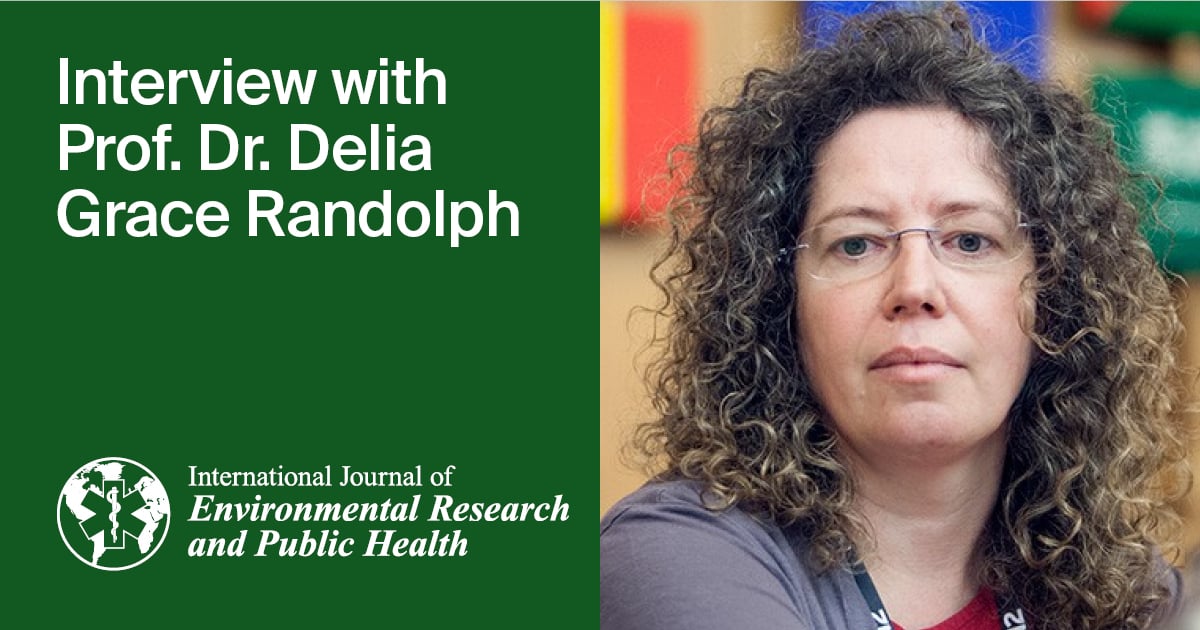
Journal Menu
► ▼ Journal Menu-
- IJERPH Home
- Aims & Scope
- Editorial Board
- Reviewer Board
- Topical Advisory Panel
- Instructions for Authors
- Special Issues
- Topics
- Sections & Collections
- Article Processing Charge
- Indexing & Archiving
- Editor’s Choice Articles
- Most Cited & Viewed
- Journal Statistics
- Journal History
- Journal Awards
- Society Collaborations
- Conferences
- Editorial Office
Journal Browser
► ▼ Journal Browser-
arrow_forward_ios
Forthcoming issue
arrow_forward_ios Current issue - Vol. 22 (2025)
- Vol. 21 (2024)
- Vol. 20 (2023)
- Vol. 19 (2022)
- Vol. 18 (2021)
- Vol. 17 (2020)
- Vol. 16 (2019)
- Vol. 15 (2018)
- Vol. 14 (2017)
- Vol. 13 (2016)
- Vol. 12 (2015)
- Vol. 11 (2014)
- Vol. 10 (2013)
- Vol. 9 (2012)
- Vol. 8 (2011)
- Vol. 7 (2010)
- Vol. 6 (2009)
- Vol. 5 (2008)
- Vol. 4 (2007)
- Vol. 3 (2006)
- Vol. 2 (2005)
- Vol. 1 (2004)
Need Help?
Announcements
15 April 2025
International Journal of Environmental Research and Public Health | An Interview with One of the Authors—Prof. Dr. Delia Grace Randolph

Name: Prof. Dr. Delia Grace Randolph
Affiliations: 1 Natural Resources Institute, University of Greenwich, Medway ME4 4TB, UK;
2 International Livestock Research Institute, Nairobi 00100, Kenya
Interests: food safety in informal markets in low- and middle-income countries
“Biological Hazards and Indicators Found in Products of Animal Origin in Cambodia from 2000 to 2022: A Systematic Review”
by Shwe Phue San, Rortana Chea, Delia Grace, Kristina Roesel, Sothyra Tum, Stephen Young, Tumnoon Charaslertrangsi, Nazanin Zand, Shetty Seetharama Thombathu, Ra Thorng, Leab Kong, Kuok Fidero and Linda Nicolaides
Int. J. Environ. Res. Public Health 2024, 21(12), 1621; https://doi.org/10.3390/ijerph21121621
Available online: https://www.mdpi.com/1660-4601/21/12/1621
The following is a short with Prof. Dr. Delia Grace Randolph:
1. Could you give us a brief introduction about yourself and your current research topic?
My name is Delia Randolph (although I publish under my maiden name Delia Grace). I have been working in food safety in low- and middle-income countries (LMICs) since 2006, making it my primary research focus for nearly 20 years. My broader interests also include One Health and veterinary public health.
The paper we recently published is part of a long-term research agenda that I have been leading, aiming to develop the best evidence on hazards and illnesses associated with food in LMICs. Foodborne diseases pose an immense health burden, with estimates showing that their impact is comparable to malaria, HIV/AIDS, or tuberculosis. More than 90% of this burden falls on people in LMICs, making it a critical research priority.
2. Could you describe the difficulties and breakthrough innovations in this research field?
One of the biggest challenges in this field is the limited and often low-quality literature available for many LMICs. Conducting rigorous systematic literature reviews in such contexts requires flexibility and adaptation. One of my earlier papers, titled “Where Literature is Scarce”, specifically addressed these challenges. Despite these difficulties, we were able to successfully conduct the first-ever systematic literature review on biological hazards in fish in Cambodia. Cambodia has recently made advancements in its food safety legal framework, including the implementation of food safety laws and the release of technical orders concerning the use of veterinary medical products in aquaculture. This study is valuable not only to policymakers and the scientific community but also to local fish farmers and exporters aiming to strengthen food safety measures. The paper was largely conducted by a Ph.D. student, Shwe San, supervised by myself and my University of Greenwich colleagues Dr. Linda Nicolaides, Prof. Nazanin Zand, and Dr Rortana Chea at the National of Animal Health and Production Research Institute (NAHPRI). Shwe is from Myanmar and is currently studying at the University of Greenwich. Her dedication played a key role in completing this important research.
3. What motivated you to conduct this research?
The sheer scale of the problem is highly motivating. Foodborne disease in LMICs is a serious issue, yet it remains neglected in terms of investment and policy action. For example, a study I conducted with the World Bank showed that, despite the massive burden of foodborne diseases in Africa, investments in improving food safety remain extremely low.
This combination of a significant public health issue and a lack of attention makes food safety research both urgent and rewarding. There is still much to be done, and each study contributes to raising awareness and improving global food safety standards.
4. How do you evaluate research trends in your field, and what are your suggestions for young scholars?
This is a critical and expanding area of research, with many opportunities for young scholars. Since food safety in LMICs has been underexplored, there is still plenty of “low-hanging fruit” for researchers to investigate. The field is highly interdisciplinary, intersecting human health, animal health, and environmental factors. Many of the most important foodborne diseases are zoonotic, and their prevalence is expected to change with climate shifts. Emerging diseases such as Clostridium difficile are also gaining attention. Given these complexities, researchers from various backgrounds—including environmental science, agriculture, and public health—can make meaningful contributions to this field.
5. How was your publishing experience with IJERPH?
I first published in IJERPH in 2015, when I authored a paper on foodborne diseases in informal markets in LMICs. More recently, my Ph.D. student and I were drawn to the journal due to the opportunity to publish in an anniversary Special Issue with waived publication fees. Given that she is self-funded and from an LMIC, this was a perfect opportunity for her to share her research. Our publishing experience with IJERPH was positive, and we appreciate the journal’s role in increasing visibility for important but underrepresented research topics.



